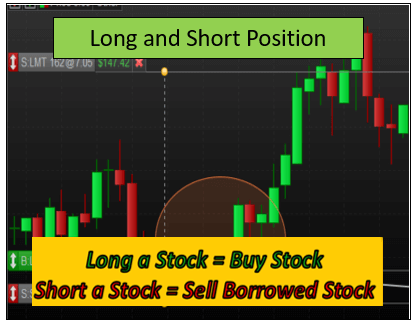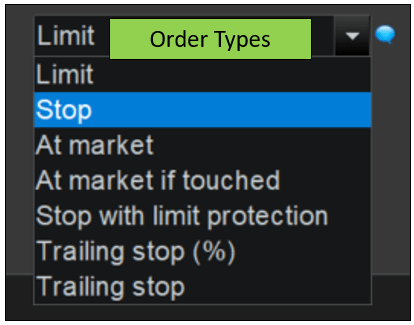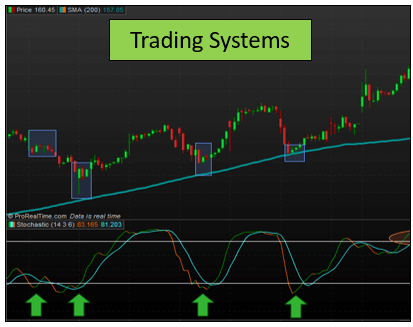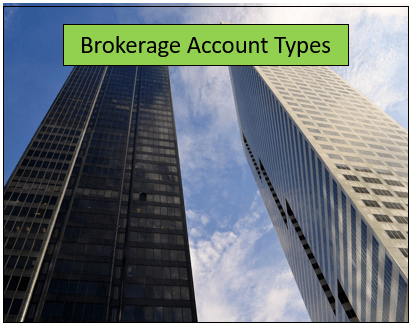What Is a Stock And The Different Types of Stocks – A Beginners Guide to The Stock Market
The first question we need to make ourselves when we want to learn how to invest or trade is what is a stock, how does it work, and why it is important to understand them.
This article will focus on what is a stock, what is the stock market, and the very different types of stocks we can find in the market. We will be using examples so you can follow everything, and we will also teach you how to scan and look for the different stocks we will be explaining here.
Let us begin!
Table of Contents
What is a stock?
A stock is the summation of all the parts into which the ownership of a company is divided. As individuals, we can buy or sell a part of the ownership of the company by acquiring shares.
A share is the unit in which we divide the stock. For example, Tesla is a company that we can buy or sell. If we decided to buy one share of the stock Tesla, we would be owners of this company by a very small percent.
The shares of Tesla, as with thousands of other companies, can be bought or can be sold at any time in the stock market
What is a stock exchange or the stock market?
When we talk about the stock exchange or the stock market, we refer to the marketplace where we can find all the stocks that are currently available to buy or sell in the world.
There are many stock exchanges in the world, and they are typically divided by countries. For example, the New York Stock Exchange, commonly known as NYSE, is where most American stocks can be found. We also have the same thing with the London Stock Exchange or LSE or the German Stock Exchange, called DAX.
Trading stocks work the same everywhere in the world, unlike options, in which we cand find american and european option styles
We will be able to access any stock exchange in the world if we have an internet connection and a stock brokerage account that trades in any of these stock exchanges.
We need to make a difference between the stock exchange and the stock index because they are not precisely the same.
What is a stock index?
A stock index is an index that measures a stock market and helps any trader or investor to have an idea of the performance of the entire market. A stock index is formed by a selection of stocks that fulfill specific criteria.
For example, there are many stock indexes in the market, but the most known is the Standard and Poors 500 (S&P 500) that measures the performance of the 500 largest companies in the United States stock exchange.
The stock index will tell us the general performance of the stocks gathered in it, and it will be quite useful to help us quickly gauge the market.
Of course, we will not be able to buy or sell the stock index, but we can use a particular investment vehicle called index options to buy or sell the index.
What is a stock brokerage, and why is it crucial to buy or sell stocks?
The next question we need to ask ourselves is how to buy or sell shares of a stock. As individuals, we cannot access the market on our own and buy or sell shares. And the reason is we need quite a lot of permissions, and we would need to pay quite a lot of fees to simply be able to access the market.
What we need is a platform, an intermediary that is in immediate contact with the stock exchange. This intermediary is called the stock brokerage or broker.
The stock brokerage is an entity, a regulated institution with the permissions to access the stock exchanges. Its purpose is to be the bridge between the stock exchange and a person or a company interested in buying or selling stocks.
Now, depending on which stocks we want to buy or sell, we need to take a look at the broker catalog of products they offer. For example, a stock brokerage might have permission to trade in the American exchange but may not have the permission to trade in the European exchange.
That entirely depends on the broker we might use. Of course, there are many brokers globally, and every one of them has different products. And we can have multiple broker accounts depending on what we want to do.
For example, we may have a stock brokerage account to trade European stocks, another brokerage account to trade American stocks, and a third to trade American stock options.
You need to make sure that the broker you are using must be regulated by a recognized entity, such as the United States SEC or the European Commission.
Surprisingly enough, there are quite many brokers that are not regulated. Those are the ones we ALWAYS must avoid because they may have dangerous disclaimers that they do not allow us to withdraw our money or charge us excessive commissions for buying or selling.
For example, ProRealTime is the broker we use and in this case, it is regulated in France. It is clearly visible in their page, as you can see in the following image
In any broker you decide to use, you must make sure that it is regulated to avoid any nasty surprises
Now that we know how to access the stock exchange by using a stock brokerage, we will be focusing on the classes of shares.
Deepening about what is a stock – The Classes of shares
Whenever we decide to buy a stock share, we will be owners of that particular company by a certain percentage, and we will have rights to receive a dividend payment (if it is issued by the company) or to vote in the shareholder’s meetings.
However, depending on the class of the share the company has issued in the market, we will have different rights that may vary from company to company.
When referring to the classes of shares, we are talking about the different rights that a particular share may have. Typically, the most common thing is to find two classes of shares which are the following
- Common stocks: the common rights allow the owner of the share to vote in the meetings and receive a dividend payment when issued by the company.
- Preferred stocks: the preferred stocks do not allow the owner to vote, but in exchange for that, they will be the ones that will receive the dividend payment first, in case that any disaster like a bankruptcy occurs in the company.
These two are the typical classes of shares that we may find in the market. However, that will entirely depend on the company. For example, Google has three types of shares.
They have a class A share that work like a common stock. Their class B share is for the founders, and they provide 10 votes per one share. And lastly, they have a class C share that works as a preferred stock.
As you can imagine, this is done for the owners to have more control over the company and avoid that anyone can take control over them.
As individuals, this data is important if we are trying to invest for the long-term perspective. Of course, if we want to be trading or day trading, this will not affect us directly.
So, let us take a look at a more practical thing that will affect our trades and investing in a more sensible way.
What are the shares outstanding?
Until now, we have only explained that when we buy a share of a stock, we will be owners of a certain percentage of the company. So, let us now talk a little more about those percentages.
The shares outstanding represent the total number of shares issued by a company and held by the investors or traders.
For example, if we have a company whose shares outstanding are 1000 shares, and we have 1 share in total, our percentage of ownership is 0.001, which is relatively small.
The best way to find out the shares outstanding of a company is by using the free Finviz scanner. The only thing we need to do is to enter into the screener and pick the shares outstanding. After that, we need to select the ownership button, and we will have the list of shares of companies that follow that criteria.
The next concept we need to study now is the float, which is quite close to the shares outstanding of a company.
What is the float in stocks?
The concept of shares outstanding is very useful to give us an idea of how many shares are issued, but this does not tell us how many shares are circulating in the market.
By circulating, we refer to those shares that are constantly being exchanged between traders and investors and not the shares of insiders or people who are holding them for a very long term.
The float in stocks will precisely measure the number of available stocks for trading to the public. In other words, this data will be more precise for our trading purposes.
What is a low float stock, then?
We will consider a low float stock to those whose float is under 10 million shares in circulation.
If we want to find them, we should take a look again at the finviz scanner, in which we will be able to identify those low float stocks quite easily.
Okay, now that we know what the float and the shares outstanding are, we will classify the stocks by the risk we might face when trading or investing with them.
Stocks sorted by the risk
If we had a scale from one to ten to identify the risk that a stock might expose us, the lowest risk would be for those stocks called blue chips, and the highest risk would be for those we call penny stocks.
What is a blue chip stock? – The Lowest Risk in our scale
A blue chip stock is referred to as a stock whose price is very hard to move to one direction or to another. Typically, we will find blue chip stocks in those companies that work in traditional sectors or industries.
For example, those companies that provide water supplies, food, logistics… companies such as Coca-Cola, Johnson and Johnson, MacDonald, Walmart, 3M, Disney… These companies are the most loved by long-term investors because of the low risk they provide.
These are companies with quite a high outstanding share and float but with a low moving price, are they are not very suitable for traders, as we will be looking for movement instead.
What is a penny stock?
A penny stock is referred to as a stock whose price is very low, typically under the 10$ or so, and has a strong potential to move to one side or to the other.
These stocks are the most dangerous in the entire market because of the high movement speed they have, and they could potentially make us lose (or win) a lot of money.
These stocks are not likely to succeed in the long term, but there are some exceptions. Maybe, you have heard about some recent stocks that begin like penny stocks, such as NIO or Nikola (NKLA). Almost from one week to another, their price raised from 3$ or 4$ to 50$ and even 80$.
Typically, the penny stocks have a very low float and not many outstanding shares, making them very easy to go higher in short periods of time.
Again, these are VERY DANGEROUS stocks that, without the proper technical analysis experience and a trading system, we should step out. Yes, we can potentially win a lot of money, but it is not likely to happen the first time we try. It is better to have a good trading system before entering these.
Last words about what is a stock
Learning about what is a stock is not as easy as we might think in the beginning.
However, we have summarized the most important concepts to help you understand the crucial parts of the stocks and the parameters we need to consider when trading or investing.
If you want to deepen a little more about different concepts like dividends, compound interest, and the very basics of technical analysis chart and indicators, we highly recommend you to take a look at our ebook “Stock Investing Guide – Stock Market Basics” in which you will find more information about the trading volume in stock market too.
This ebook will help you learn everything you need to get started in the trading and investing world, explained with many examples and real trades. If you are interested, take a look here to find a summary of the content and begin your career as a trader!
















